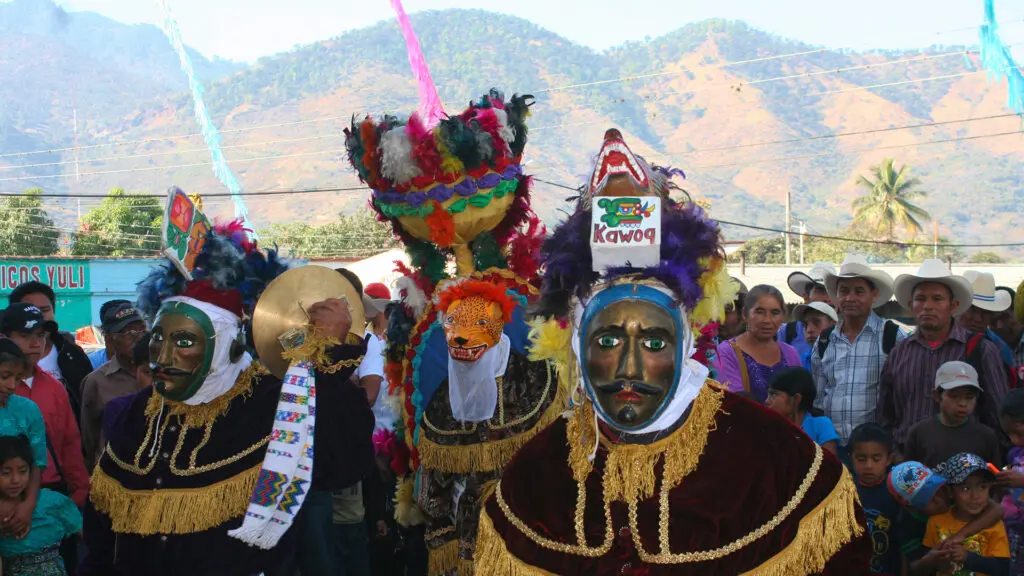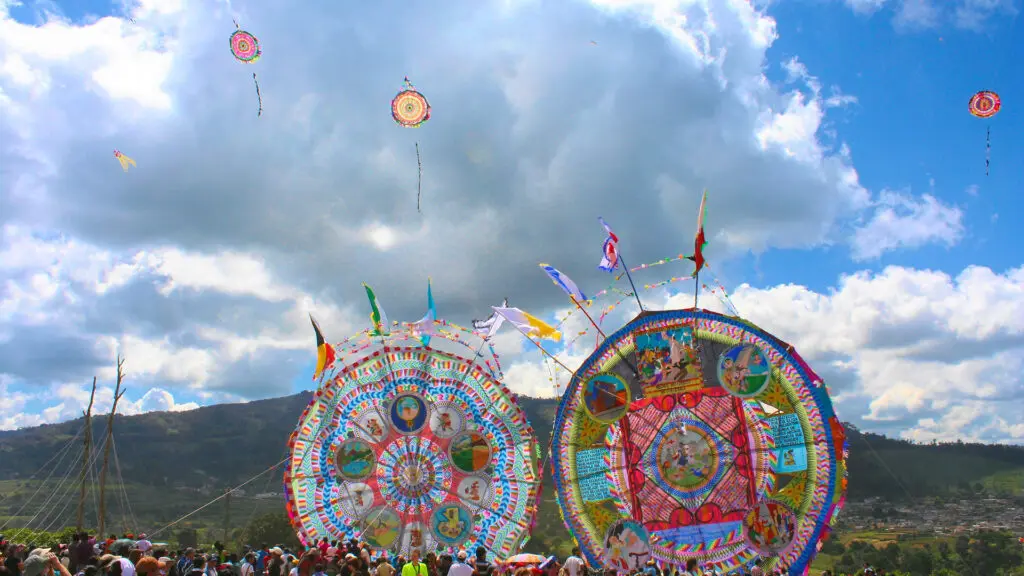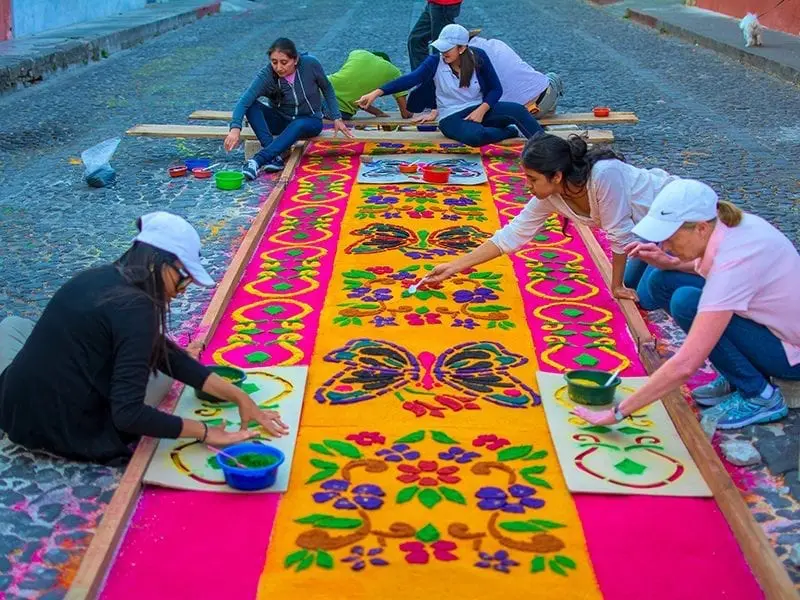All Saint’s Day In Todos Santos Cuchumatan
It is a blend of ancient pagan beliefs and Catholic traditions brought by the conquerors in the 16th and 17th centuries.

Commemoration to the ancestors
There are other representations of death in different Mayan sites, such as El Baul in Santa Lucía Cotzumalguapa, indicating the reverence of the Mayan civilization to death.
Unique fusion
The native, meanwhile, acquired the Christian events but adapted them to their environment, resulting in a series of syncretic rituals that were sustained over time and took a unique and unparalleled enhancement.
In the commemoration of saints and the dead, the celebration took a particular enhancement due to the prehispanic custom of devoting a few days to sharing with the ancestors.
The acceptance of the Christian faith gave rise to the belief that the dead can revisit their loved ones in the world of the living, and thus rituals unique to Guatemala arose.
These include the preparation of altars for loved ones, the food called fiambre, kites, horse races, among many other events that make this season a colorful social and cultural manifestation.
These traditions and festivities have drawn the attention of travelers worldwide, and yearly, they take the time to go to Guatemala, matching up their vacations to Guatemala to live an authentic cultural experience in the enigmatic Mayan world.
Celebration of Santo Tomas, Chichicastenango
The Giant Kites Festival of Santiago & Sumpango, Sacatepequez
Date of celebration, November 1 and 2 Currently, two categories of kites have been established. Those are up to six meters in height, and the biggest is about 20 meters.
Two months before the event, the persons were organized into 10 to 15 people groups. Then, a committee organizes the activity and consensus about the kites and the designs and materials to use.
The themes were chosen and not made for a competition in the past. The designs are created by experienced hands, especially young people who have maintained the existing tradition in the municipality.
The Feast: The expected day
On November 1, the cemetery is filled with many people who come to admire the creative art of the inhabitants, organizers, judges, and a large number of tourists.
Accompanied by fireworks and music, colorful kites fill the sky decorated with different motifs. So the tradition lives on, The tradition lives on, even though the designs have evolved and acquired other characteristics.
The indigenous people prepare a visit to their dead relatives. First, they decorate the graves; people arrive with food, the deceased’s favorite, which they share with the family.
They make a prayer that expresses their affection to their loved ones. Then, they cover the ground with flowers. Finally, it shows the family’s art; It is a particularly colorful and traditional moment to commemorate those who have already left.
The bond with the other world
Kites are believed to have been brought to Guatemala by Franciscan priests. They discovered them during evangelization in Asia.
Various historians of colonial plazas refer to them as kites. Native adopters began using them with tissue paper, reed, and glue; they began to blow them away with the help of strong November winds. Kites are an ideal means of communicating with the dead.
During these two days, they “have permission” to revisit the world of the living. Thus, people gathered in cemeteries fly kites dedicated to their loved ones. Tradition says they can’t do flight tests. These only need to be flying on a specific date to communicate the message. Oral tradition indicates that this colorful festival began at the end of the 19th century.

Rabin Ajau Fest
The national folk festival of Cobán, Alta Verapaz, is a cultural event that brings together delegations that represent the indigenous beauty of all the Mayan ethnic groups currently existing in Guatemala.
Its fundamental objective is the exchange of cultural imprints of each region and the election and investiture of the National Indigenous Queen or Rabin Ajau (Daughter of the King).
It is celebrated on the occasion of the patron saint festivities of the City of Cobán, from August 1 to 6 of each year, in honor of Santo Domingo de Guzmán.
It is an event of typical costumes and various folk dances that surprise visitors, taking indelible memories of contact with ethnic groups of the ancient Mayan culture.
The Paa’bank Cultural Festival
One of the most important celebrations of native traditions in Guatemala is the traditional Paabanc dance. This festivity is commemorated by the Qeq’chis people who dress in traditional attire.
This is one of the festivities that is most frequently observed in Las Verapaces, in the Q’eqchi group, since some are for the wake of the saint’s day (Rub’el Nimq’e) and the same on the day of the festivities (Li Nimq’e) and sometimes occurs in the transmission or delivery of charges and their reception, which may be from the superior stewardship of a brotherhood from which other small ones emerge, such as the Covers, Fireworks Games and the candles.
It is there where we observe in a ritual form of reverence, humility, and harmony, in a balanced society that delivers a position to be able to administer it well; That is the Q’eqchi society, where the moral and spiritual values that keep these people latent start to continue cultivating yesterday, which is the school of the present.
That is why, as a cultural act, after the event of the Election and Coronation of the National Indigenous Queen “Rabin Ajaw,” this party is held in the Ermita de Santo Domingo, where religious ceremonies, presentation of folkloric dances and traditional music with harp, shawm, adufe, marimba, and tamborón.
An essential part of this festivity is the typical food. The famous Cak’ik is made, representing our region’s gastronomic culture and the favorite Boj drink. In addition, fireworks are burned to brighten up the event.

Holy Week in Guatemala
Holy Week is one of the most vibrant periods to travel to Guatemala. Each of the native communities carries out religious and folkloric traditions. Among the best places to see this event is Antigua Guatemala. Locals take part in a procession through the street carrying statues of Christ that represent the station of the cross.
They are colorful processions that march on a carpet of sawdust vividly placed in the town’s streets. Processions take place throughout the week and run through the entire town. Other towns with traditional parades are Huehuetenango and Totonicapán. The churches of Guatemala City also have processions.


